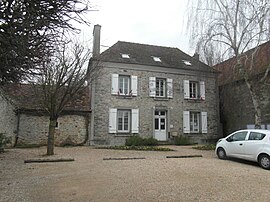Réau
Commune in Île-de-France, France From Wikipedia, the free encyclopedia
Commune in Île-de-France, France From Wikipedia, the free encyclopedia
Seamless Wikipedia browsing. On steroids.
Every time you click a link to Wikipedia, Wiktionary or Wikiquote in your browser's search results, it will show the modern Wikiwand interface.
Wikiwand extension is a five stars, simple, with minimum permission required to keep your browsing private, safe and transparent.
Réau (French pronunciation: [ʁeo] ) is a commune in the Seine-et-Marne department in the Île-de-France region in north-central France.
Réau | |
|---|---|
 The town hall in Réau | |
| Coordinates: 48°37′17″N 2°37′23″E | |
| Country | France |
| Region | Île-de-France |
| Department | Seine-et-Marne |
| Arrondissement | Melun |
| Canton | Combs-la-Ville |
| Intercommunality | CA Grand Paris Sud Seine-Essonne-Sénart |
| Government | |
| • Mayor (2020–2026) | Alain Auzet[1] |
| Area 1 | 13.32 km2 (5.14 sq mi) |
| Population (2021)[2] | 1,966 |
| • Density | 150/km2 (380/sq mi) |
| Time zone | UTC+01:00 (CET) |
| • Summer (DST) | UTC+02:00 (CEST) |
| INSEE/Postal code | 77384 /77550 |
| Elevation | 82–94 m (269–308 ft) |
| 1 French Land Register data, which excludes lakes, ponds, glaciers > 1 km2 (0.386 sq mi or 247 acres) and river estuaries. | |
Around 1881, sugar beet producer Arthur Brandin invested in a Decauville railway with eight horse-drawn tipping lorries for the Ferme de Galande near Réau, 15 km east of the Decauville factory in Petit Bourg. As well as being a sugar beet farmer, he was also mayor of Réau and Republican Consul of the Canton of Brie-Comte-Robert from 1895 to 1912. The surface soil of his sugar beet fields consisted of clay in which fragments of siliceous sandstone were embedded, used for millstones and structural purposes. The subsoil was limestone, so the fields were often very muddy at harvest time until Brandin installed an innovatively designed drainage system.[4]
The inhabitants are called Réaltais.